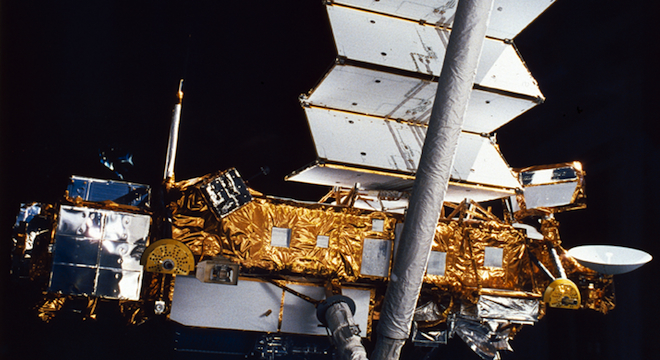NASA has released an updated prediction for when and where it expects its defunct climate satellite to crash land.
According to an update from the agency posted on Thursday morning, the UARS satellite will come down “sometime during the afternoon” on Friday, September 23 basically anywhere except North America. “The satellite will not be passing over North America during that time period,” the release adds.
That leaves everywhere else between the North and South 57th latitude, the region between Antarctica and Greenland. Still, there is a 1-in-3,200 chance of the satellite striking any person and a 1-in-21 trillion chance of it striking you personally.
Satellite-tracking non-profit and Air Force affiliate The Aerospace Corporation has been bolder in its latest prediction, saying that the satellite will plunge into the Pacific Ocean off the west coast of South America, in between Peru and Chile, around 6:00 p.m. ET, plus or minus nine hours. Check out their map below:

NASA will continue posting updates here with increasing frequency until the satellite begins re-entry at the 24-hour, 12-hour, 6-hour and 2-hour marks. Even two hours prior to re-entry, NASA will only be able to predict within a 6,000-mile radius where the satellite’s debris could strike.
A previous risk assessment paper from the agency predicts that the satellite will break up into 26 pieces, including a 300-lb. piece, which will be scattered over a 500-mile long trail.
Meanwhile, amateur French astrophotographer Theirry Legault, who on September 15 captured the first video of the UARS approach from the ground, using his own modified spy satellite tracking telescope, wrote to TPM’s Idea Lab on Thursday via email.
“Being a low orbit satellite, it was condemned to come down some day. The chances of hurting someone are so low…I hope that it will reenter over my country, we would have a magnificent shooting stars rain! It is a big satellite (although not as big as Hubble or US spy satellites), therefore it’s possible to obtain some details on videos (although the turbulence was very strong when I took the picture: I could obtain more details in better atmospheric conditions).”
TPM’s Idea Lab will continue to update as the satellite re-enters. Stay tuned and follow along with NASA’s updates here.
Correction: This post originally misstated the odds of the satellite hitting a specific individual at 1-in-21 billion. The figure has since been corrected to 1-in-21 trillion. We regret the error.









